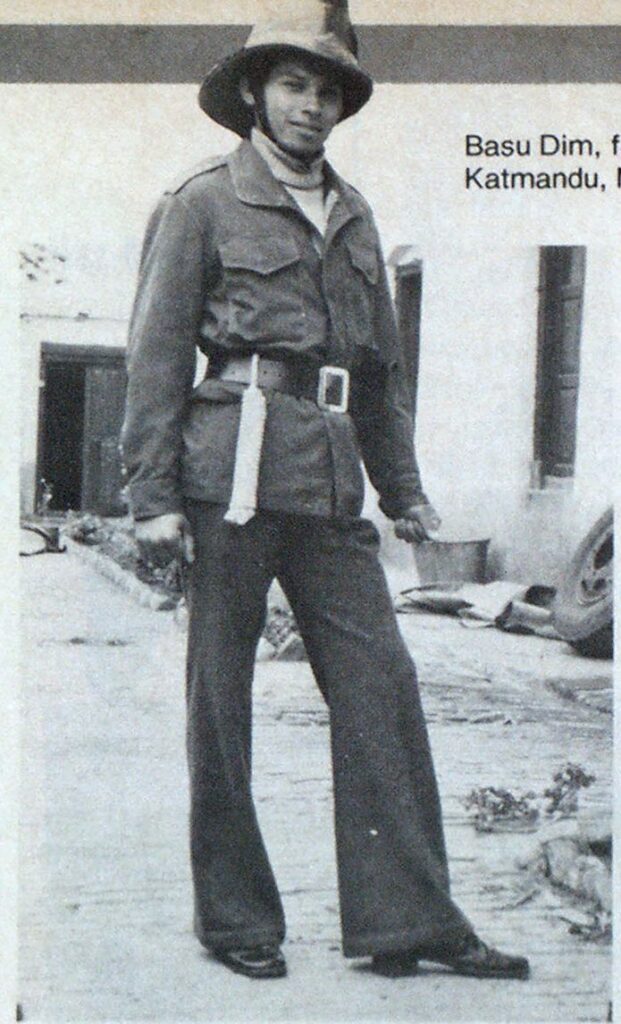
A FIRE DEPARTMENT IN THE LAND OF MT. EVEREST
MANAGEMENT
Katmandu is an ancient city in a Himalayan valley As it grows, its fire fighters face new demands.
As a former fire fighter, it has been interesting to observe the operation of the fire service in various areas of the world. On a recent trip to Nepal, I interviewed some of the members of the Katmandu Fire Department, which is organized quite differently from fire departments in the United States. Nepal, slightly larger than the state of Arkansas, is situated between India and Tibet.
Katmandu is a city still medieval in appearance, with dozens of Hindu and Buddhist temples; market squares where vendors sell an assortment of goods ranging from vegetables to antique Tibetan prayer wheels; and narrow, winding, cobblestone streets. Bicycle rickshaws (pedicabs) operated by men or teen-aged boys, are still a common mode of transport. From most areas of the city, the snow-capped peaks of the Himalayas are visible in the distance.
Although the population of Katmandu is composed of a mixture of many different races and religions, most of the fire fighters are Hindi, and nearly all from one caste -the “chetri” —which is traditionally the caste of warriors. The caste system was officially abolished in 1963. For thousands of years before that, in India and other countries to which the Hindu religion spread, a person’s occupation was determined at birth by the caste of his parents. Even today, remnants of the caste system are subtly pervasive in India and Nepal, and although it is now possible for men of any religion or caste to enter the fire service, the majority of fire fighters are still men born into the traditional warrior caste. There are no women employed in the fire service in the country of Nepal.
Two fire stations serve Katmandu’s population of approximately 150,000. One station is located in the central area of the city, and one is at the airport. There are two additional fire stations in the Katmandu Valley, in the outlying towns of Patna and Baktipur, which are within Katmandu’s mutual-aid area.

Photo by Mimi Church
The staff of the central station consists of 42 men, including 24 front-line fire fighters, seven drivers, one chief and the administrative staff. The fire fighters reside at the station nearly all of the time, leaving only one day per week. In addition, they have 30 days paid vacation per year. They earn salaries of approximately 600 Nepalese rupees per month (about $50 U.S.), as well as receiving food rations from the government. The fire fighters also raise animals for meat at the stations. At the time of this interview, a goat and several wild pigs were being raised in the backyard of the central station.
Fire fighters in Katmandu generally begin their training at the age of 18. When an opening becomes available, a trainee is selected from among men given personal recommendations by officers of the army or police department, also composed mainly of Hindis of the chetri caste, or by fire fighters or administrators of the fire department. There are no written examinations (the literacy rate is less than 20 percent) to qualify to become a trainee, although there is a physical agility test which must be passed. A trainee is on probation for six months.
There is no specific training program. The new recruit lives at the station along with the regular fire fighters who train him during the course of daily activities. Usually there are only one or two men in training at any given time. The trainees are not paid, although they do receive a food ration Fire fighters may retire with a pension after 17 years of service, although most do not retire until after the age of 45. (The average life expectancy of a male born in Nepal, according to the World Almanac, is 42.2 years.)
The main trucks used at the Katmandu station are two Magirus-Deutz pumpers, which were a gift presented by the West German government to the government of Nepal in 1974. There is a hydrant system for the pumpers throughout Katmandu. An older ladder truck is of Inciian manufacture. All of the breathing apparatus is of West German make. Most of the other equipment used in Katmandu is either from India or England. The uniforms and protective clothing are of a heavy black cotton material. The chief wears the same uniform — in white, of course.
The frequency of fires in Katmandu is not particularly high. The central station averages two or three major incidents per week, with a higher incidence of fires occurring during the winter, due mainly to the increased use of space heaters and of indoor cooking. Electrical shorts are responsible for starting numerous fires. There are no smoke alarms or other alarm systems in use in Katmandu at present. Most of the alarms are called in by telephone, although there were less than 10,000 telephones in the entire country in 1978.
The members of the fire department of the City of Katmandu, Nepal, would like to extend their greetings and good wishes to their fellow fire fighters throughout the United States, with hope for increased international cooperation and understanding

